Beginning on the morning of January 7, 2015, a series of terrorist attacks stunned Paris. In the first incident, brothers Said and Cherif Kouachi killed 12 people after storming the offices of the satirical weekly Charlie Hebdo, later claiming to be acting in the name of al Qaeda in Yemen.
A day later Amedy Coulibaly, who had links to the Kouachi brothers, killed a policewoman in the district of Montrouge. Coulibaly claimed to be acting on behalf of the Islamic State group. He would go on to kill four more people and take hostages at a kosher supermarket the following day. In total, 17 people died in three days of attacks. All three gunmen were later killed in nearly simultaneous police raids on the evening of Friday, January 9.
In the aftermath of the attacks, an estimated 1.5 million French people took to the streets of Paris in a unity march and to reaffirm France’s commitment to freedom of speech. The attacks also sparked a national debate about the radicalisation of France’s disenfranchised young people. All three attackers were born and raised in France.
It is publication day for the satirical weekly, and as issue 1,177 of Charlie Hebdo hit newspaper stands, some of France’s most famous satirical cartoonists are holding an editorial meeting at the magazine’s headquarters in the 11th arrondissement.
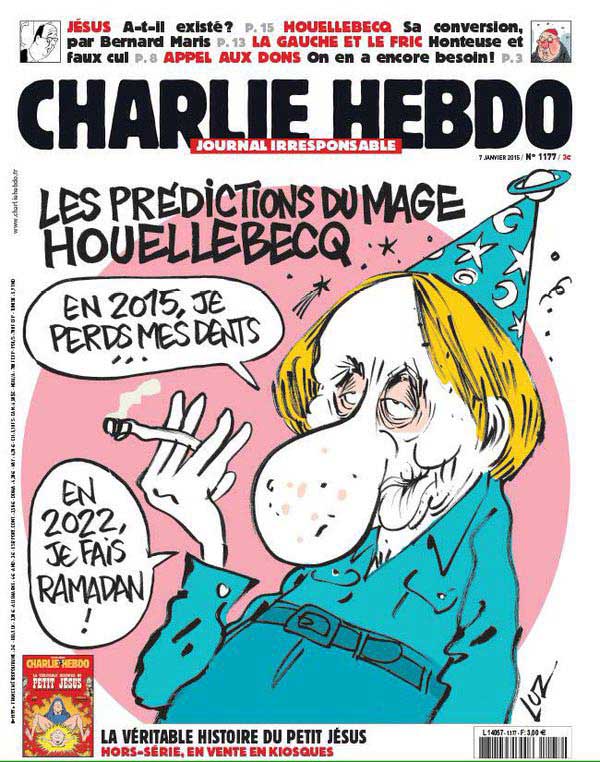
Two gunmen storm Charlie Hebdo’s offices. They shoot dead 11 people, including five cartoonists, two columnists, a copy editor, a guest at the meeting, a police officer and a maintenance worker.
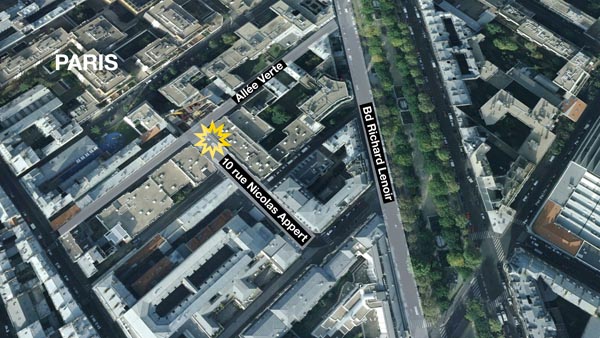 © FRANCE 24
© FRANCE 24
Two men dressed in black, wearing balaclavas and carrying kalashnikovs, emerge into the street.
The gunmen leave in a black car but are met by police on the neighbouring street, Allée Verte. They fire at police, forcing them to reverse their car.
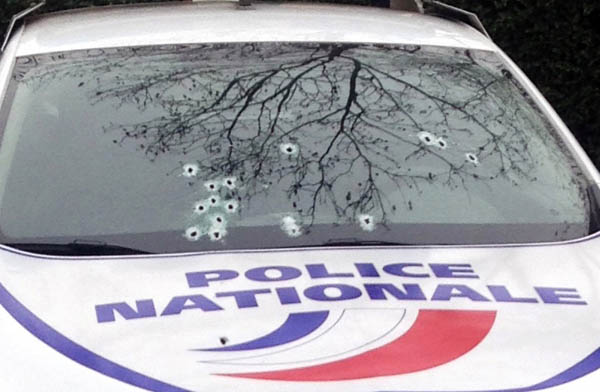 © PHOTO AFP
© PHOTO AFP
Minutes later, the attackers shoot dead Ahmed Merabet, a local policeman who had come to help his colleagues.
The pair crash into a woman's car at Place du Colonel Fabien. Shortly after, they force a pensioner out of his car on the Rue de Meaux. They leave Paris in the stolen car via the Porte de Pantin.
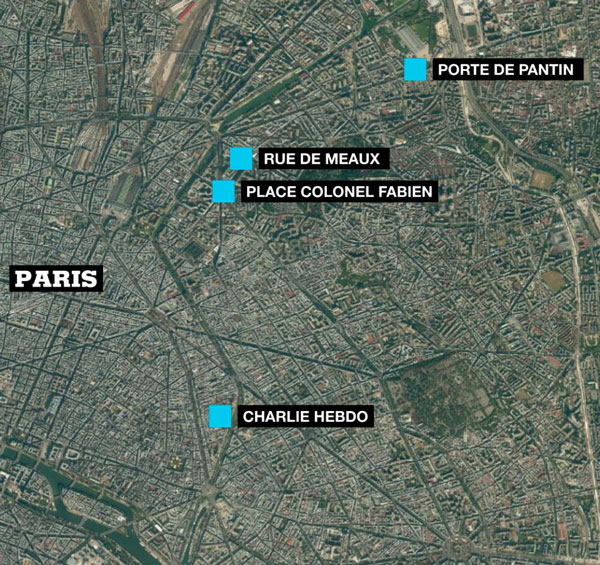 © FRANCE 24
© FRANCE 24
Inside the first getaway car, police find an ID card bearing the name Said Kouachi. They also find DNA samples belonging to his younger brother, Cherif.
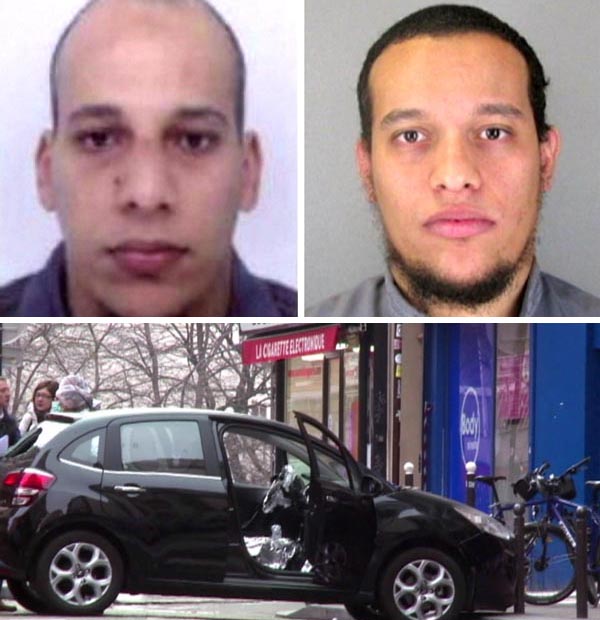 Cherif (left) and Said (right) Kouachi
Cherif (left) and Said (right) Kouachi
The rallying cry “Je suis Charlie” appears first on social media then among the crowds gathering at the Place de la République in Paris.
In cities across France – including Toulouse, Strasbourg, Bordeaux and Lyon – tens of thousands of people gather spontaneously to denounce the attacks.
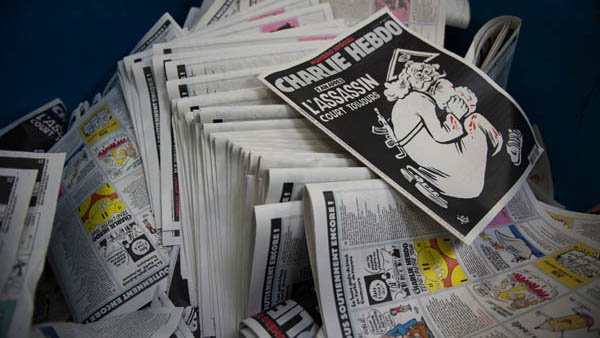 © PHOTO AFP
© PHOTO AFP
Charlie Hebdo’s caricatures frequently caused outrage by poking fun at religion and politics. They were not popular with everyone, but in killing the country's most famous cartoonists the gunmen had targeted a core French value: freedom of speech.
The day of mourning begins with another tragedy. A gunman kills a trainee policewoman in Montrouge, a suburb south of Paris. Clarissa Jean-Philippe had been dealing with a traffic incident and was unarmed when she was shot dead. The interior minister warns against presuming a link between the shooting and the attack on Charlie Hebdo.
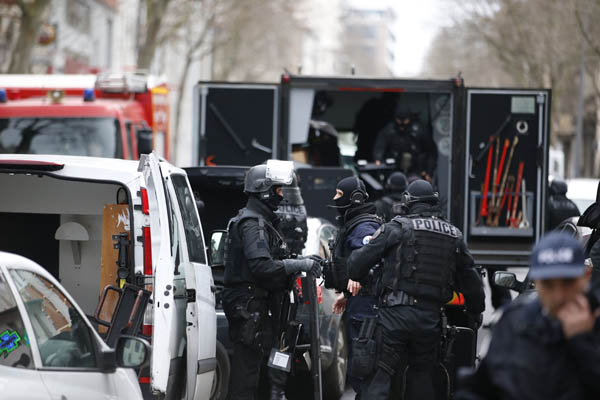 © PHOTO AFP
© PHOTO AFP
Police begin looking for the three main suspects. The first major lead comes when the Kouachi brothers rob a service station near the town of Villers-Cotterêts in the Picardy region, 80kms northeast of Paris.
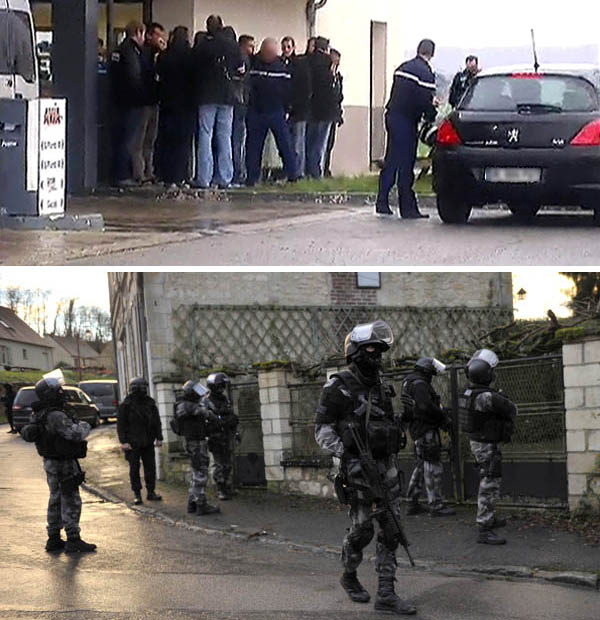 © PHOTO AFP
© PHOTO AFP
At noon, France holds a minute of silence to commemorate the victims.
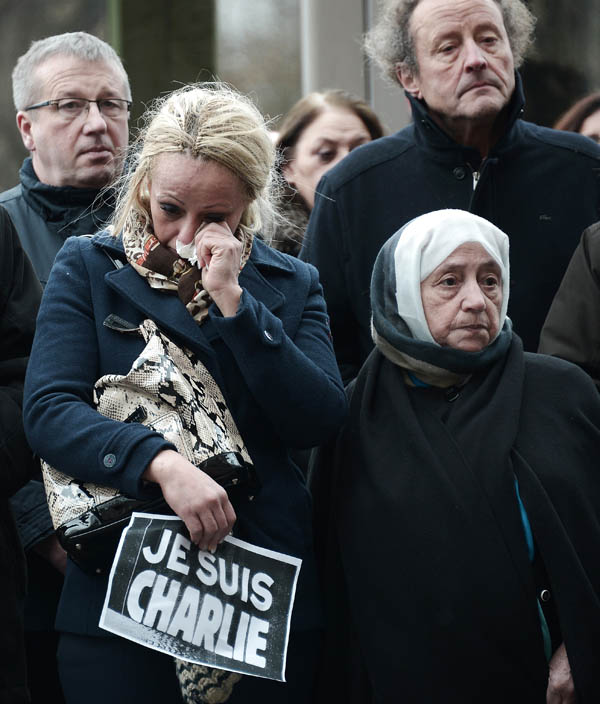 © PHOTO AFP
© PHOTO AFP
On Friday morning, after spending the night in a Picardy forest, the Kouachi brothers steal another car near the village of Montagny-Sainte-Felicité. The driver alerts the police. Police pursued the brothers as they began driving in the direction of Paris. Some 20 minutes later, they abandon the stolen car in an industrial park in Dammartin-en-Goële, 40kms northeast of Paris.
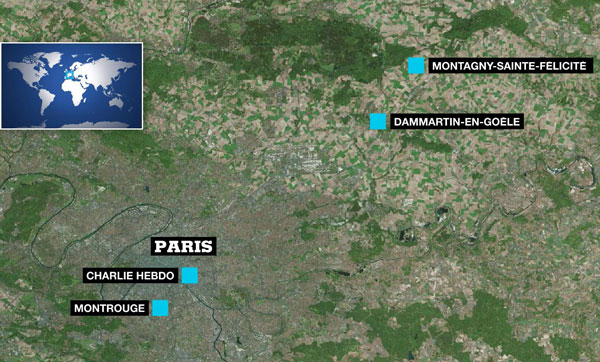 © FRANCE 24
© FRANCE 24
The Kouachi brothers exchange fire with a brigade of police before fleeing on foot. They enter a print workshop where they are cornered by police.
Security forces surround the printing complex. Police helicopters arrive and snipers are positioned on nearby roofs.
Parts of the industrial park are evacuated but people working too close to the print workshop are ordered to stay put, as it is too dangerous for them to venture outside.
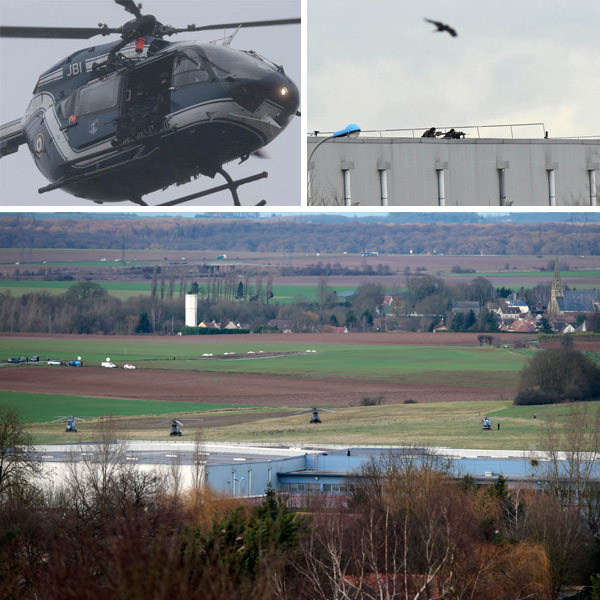 © PHOTOS AFP
© PHOTOS AFP
When the Kouachi brothers arrive the workshop’s manager, Michel Catalano, tells employee Lilian Lepère to hide upstairs. Catalano is alone with the brothers for nearly two hours. He bandages up a gunshot wound on Said Kouachi's neck and is later allowed to leave unharmed.
In the early afternoon, a gunman storms a busy kosher supermarket at the Porte de Vincennes on the eastern edge of Paris. He is identified as Amedy Coulibaly and is believed to be responsible for killing the policewoman in Montrouge the day before.
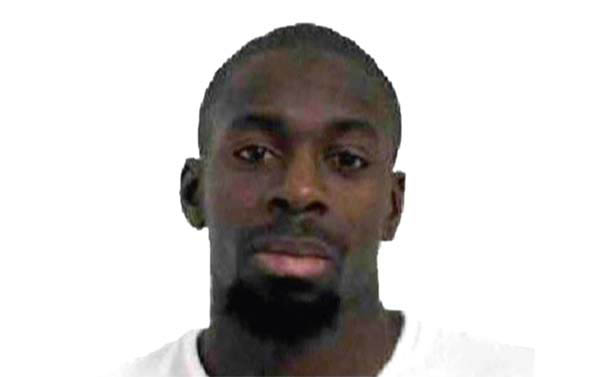
Police quickly cordon off the area surrounding the Hypercacher supermarket.
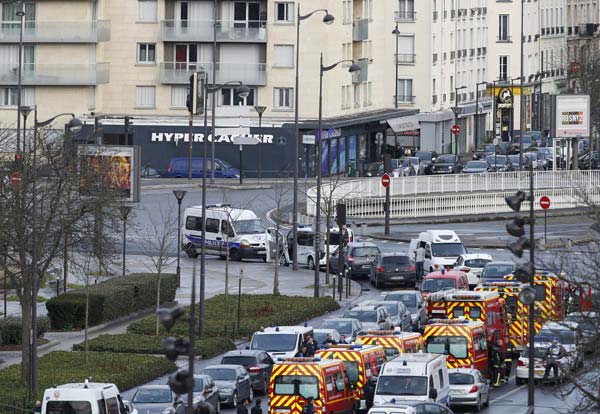 © PHOTO AFP
© PHOTO AFP
Police believe Coulibaly has taken at least a dozen hostages. Some are hiding inside a cold room and some are in the main shop with Coulibaly.
Coulibaly threatens to kill his hostages if police harm the Kouachi brothers. A police negotiator speaks to Coulibaly by phone and concludes that he is ready to die in a fight.
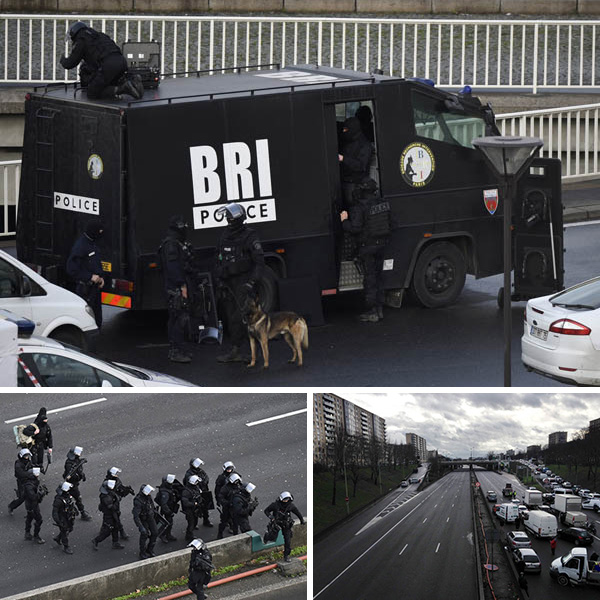 © PHOTOS AFP
© PHOTOS AFP
Police outside the print workshop have little choice but to wait until their fellow officers have brought the hostage situation at the Hypercacher under control.
Attention suddenly switches back to Dammartin-en-Goële, where the Kouachi brothers begin shooting at police. Both are killed in a brief gun battle.
Just after 5pm, the police force their way into the kosher supermarket. Coulibaly is killed as he runs towards them, shooting.
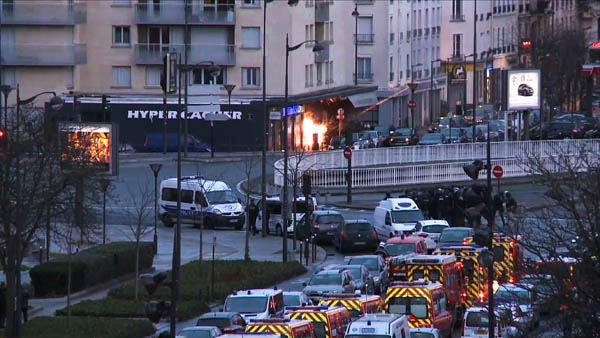 © PHOTO AFP
© PHOTO AFP
Before the police moved in, Coulibaly had killed four of his hostages: Yoav Hattab, Philippe Braham, Yohan Cohen and François-Michel Saada.
This footage shows police freeing hostages from the Hypercacher. Lilian Lepère, who had spent all day hiding inside the print workshop in Dammartin-en-Goële, is evacuated through a window when the siege is over.
Some 3.7 million people across France march to show their commitment to freedom of speech and to denounce terrorism in a Marche Républicaine. The biggest rally is in Paris, where an estimated 1.5 million people take to the streets.
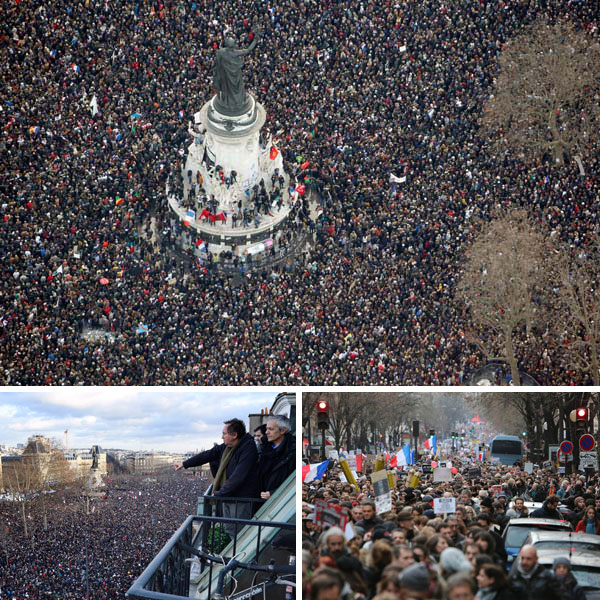 © PHOTOS AFP
© PHOTOS AFP
Nearly 50 leaders from around the world join President Hollande at the head of the Paris march.
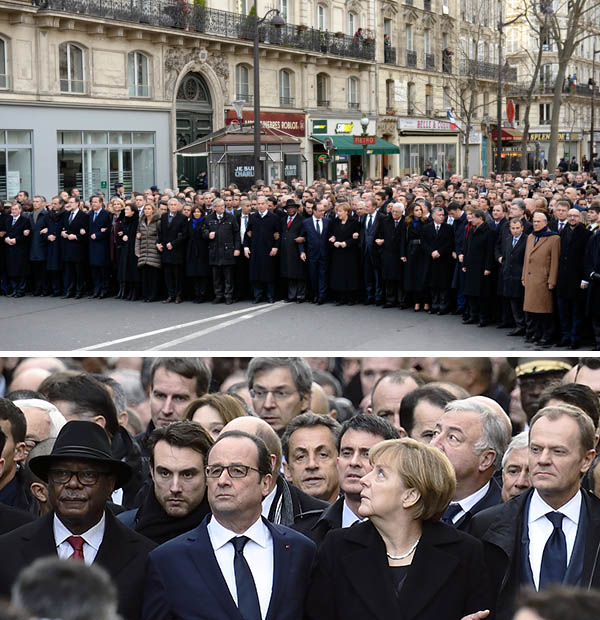 © PHOTOS AFP
© PHOTOS AFP
The slogan “Je suis Charlie” becomes a rallying cry at demonstrations in France and around the world.
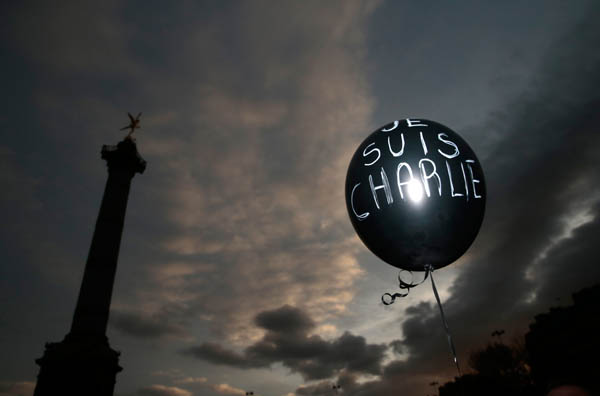 © PHOTO AFP
© PHOTO AFP
Marchers clap as police vans drive through the crowds
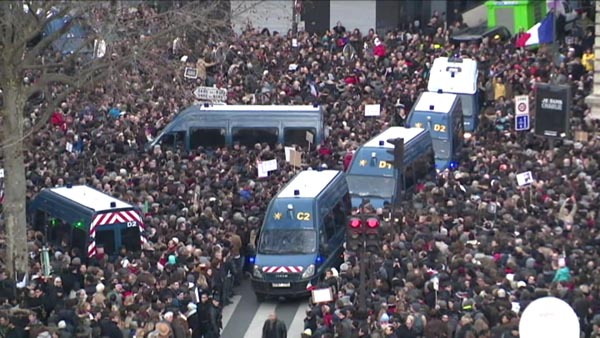
Members of parliament sing France’s national anthem at the Assemblée Nationale, or lower house. It is the first time ruling and opposition MPs have sung the Marseillaise together since World War I ended in 1918.